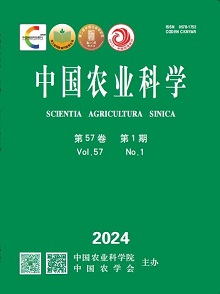【Objective】Eestern and Southern Gansu is one of the epidemic centers of stripe rust and over-summering region for Puccinia striiformis f. sp. tritici (Pst) with continuous emergening of new Pst races in Northwestern China. The objective of this study is to analyze the genetic architecture of stripe rust resistance in winter wheat cultivars grown in those regions since 1990s for a better genetic diversity control of the disease, breeding of durable resistant cultivars, sustainable green and healthy ecological agriculture in Southern Gansu. 【Method】The seedling and adult plant stage resistance to the prevailing Pst races CYR33, CYR34, etc. of 117 wheat cultivars (lines) were evaluated at greenhouse in 2021 and field trials in Qingshui of Gansu and Pixian of Sichuan, respectively, during 2019-2020 and 2020-2021 cropping seasons. Molecualr markers for 15 Yr genes were also applied to detect the presence of known stripe rust resistant genes. 【Result】Of the 117 varieties and lines tested, thirty-four (29.1%) were found to perform adult plant stage resistance (APR) in the field, among these, 25.6% and 3.4% of cultivars were released in Southern Gansu, and Eastern Gansu, respectively. Another 25.6% susceptible cultivars from Southern Gansu exhibited slow rusting with disease severity (DS) less than 20%. Eighty-two cultivars (70.1%) were resistant to the race CYR33 of Pst at the seedling stage. Among them, 67 (57.3%) and 15 (12.8%) were planted in Southern and Eastern Gansu, respectively. However, only seven (6.0%) of the total entries were resistant to the dominant race CYR34 at the seedling stage, and all of these were cultivars from Southern Gansu, such as Lantian 131 etc. The stripe rusts resistant cultivars named as Lantian, Zhongliang, and Tianxuan series at both seedling and adult plant stages were mainly released after 2010. Molecular markers screening identified the presence of Yr9 (49.6%), Yr10 (1.7%), Yr17 (12.8%), Yr18 (7.7%), Yr26 (12.8%), Yr28 (20.5%), Yr29 (10.3%), Yr30 (34.2%), Yr41 (2.6%), Yr46 (16.2%), YrZH22 (15.4%) and YrZH84 (27.4%) in some cultivars, preferly as 2-5 genes combinations in 73 (62.4%) cultivars. Pyramiding of YrZH84, YrZH22, and Yr17 with other stripe rust resistance genes could provide better disease resistance than other gene combinations. In addition, high frequency of Yr10, Yr17, Yr18, Yr28, Yr29, Yr30, Yr41, and Yr46 was detected in wheat cultivars grown in the dry highland Pst oversummering region. However, Yr26, Yr30, YrZH22, and YrZH84 were mainly identified in wheat cultivars of the valley Pst overwintering region, indicating significant genetic architecture difference for the stripe rust resistance genes between the cultivars of the oversummering and overwintering regions. Higher genetic diversity of stripe rust resistance genes was found in the cultivars of the oversummering region, compared with that released in the overwintering region. 【Conclusion】Our results revealed the current status of stripe rust resistance genes and their utilization in winter wheat cultivars of Gansu, the northwest oversummering region for Pst of China, in the past 20 years. Diversification of stripe rust resistance genes have been successfully applied in the winter wheat breeding program to develop commercial wheat cultivars and lines for sustainable control of the stripe rust disease. The development of wheat cultivars with stacked stripe rust resistance genes has solved the historical problem of wheat cultivars with narrow genetic background and mono-resistance gene, domonstrating the successful control of wheat stripe rust epidemics using genetic diversity of wheat resistance gene in this region. The present study provides theoretical basis for genetic diversity control of stripe rust disease and set an example for the sustainable green ecological agriculture by breeding wheat cultivars with durable disease resistance.









